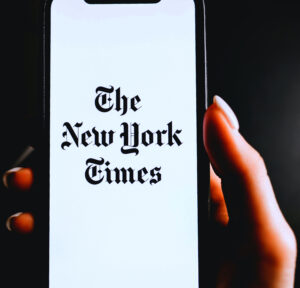
Rescuing News and Journalism from Google and Facebook.
The biggest unintended consequence of Google and Facebook has been the adverse effect on reliable journalism.

Nothing is more important to us as a media & technology company than the emancipation of online news and journalism from the jaws of Google and Facebook’s ad tech mediation platforms.
The internet gives all of us access to more information at our fingertips every single day than at any other time in history, more and more of which is increasingly unreliable and manipulated.
Since 2015 it has become apparent that more information is producing more and more misunderstanding, uncertainty, and chaos, with the cause of much of this advertising technology, data tracking and mediation platforms, primarily owned and controlled by Google’s and Facebook’s standardization.
In 2020, the entire world experienced the chaos of not having certainty around reliable Covid response.
If Google and Facebook are so great, this should have been the easiest problem to solve in the history of civilization.
What happened?
The Audience Reach Problem
Everyone already knows that if you have a popular social media account, Twitter for example, and you have perhaps a few million followers, each tweet you send out to your followers reaches only a very very small portion of your audience.
This is the audience reach problem. But what happens if you are a large news and media publisher on the web?
Very large news publishers, for example the New York Times, have monthly audiences which can peak close to half a billion readers per month.
How much of their audience does the New York Times reach with one of their own pieces of content on their own platform? On average less than 1%.
On any given content article on the web only about 1%, often far less and rarely above the platform’s audience will actually see the article, while 99% of the audience will never discover it.
This is called the audience reach problem, and nothing amplified this problem more than the 2020 Covid-19 response.
Is It Possible To Reach The Other 99% Of The Internet Audience?
Until PiP, no one has full audience reach except for ad networks, primarily Google and Facebook.
Ad networks have 100% audience reach on the internet, while all reliable news and journalism only have 1%.
This imbalance forces even publishers such as the New York Times to take out ads on their own platform to promote articles on the New York Times! Consider; if sources of reliable information have 1% reach, and ad networks have 100% reach, it means our exposure to misinformation, clickbait and propaganda is like sifting for gold in a mud stream trying to find something meaningful and reliable.
If reliable news publishers on the web did have 100% audience reach around reliable news articles, it is conceivable that uncountable lives could have been saved, simply by having reliable access to reliable information.
Introducing PiP for News and Journalism
So this is what PiP is for: scaled audience reach specifically for a content page. A PiP page is not an ad, not a shell for ads, not an ad tracking product!
A PiP page is a dynamic HTML5 mobile content page that is non-indexed by Google’s search algorithm and impervious to trackers and ad networks.
A totally private channel, an internet inside of an internet, decentralized. A PiP Page empowers mobile publishers of reliable information by giving them a powerful alternative channel, available at their fingertips. PiP pages are skippable!
A PiP is a skippable page that is broadcasted in between all pages, distributed directly to readers of any mobile website or mobile app, existing on a tertiary channel! If your own a mobile device, click here to see a PiP Page load from a website.
